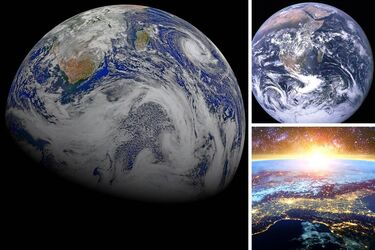How old is the planet Earth really: scientific justification

The age of the Earth has been determined for a long time. Our planet has existed for approximately 4.54 billion years, with an error of plus or minus 50 million. This estimate is related to the processes of Earth's formation as a planet with a core and spherical shape.
Although other planets in the Solar System could have been formed at the same time, the development of the Earth and the Moon occurred a little later.
Estimating the age of the Earth is based on radiometric dating, which uses the amount of radioactive isotopes and their decay products. This method works because the synthesis of some elements preceded the formation of the solar system, Sciencenotes writes.
Before the age of science, information about the age of the Earth was reflected in myths and religious texts, and early estimates were relatively short, only a few thousand years. However, with the development of science during the Enlightenment, the idea of the Earth's age began to change.
In the 19th century, Lord Kelvin estimated the age of the Earth to be between 20 and 100 million years based on the cooling of the planet, without taking into account radiogenic heating and other factors.
Read also: Scientists have found out what killed the dinosaurs
In 1895, the Irish mathematician and engineer John Perry calculated the age of the Earth to be between 2 and 3 million years. His model included a convective mantle and a thin crust, but most scientists ignored his work.
The first accurate estimates of the Earth's age were obtained through radiometric dating in the 20th century. Dating using uranium lead from extraterrestrial meteorites provided the first accurate estimate of the Earth's age: 4.5 billion years.
Using these methods, scientists were able to confirm the approximate age of the Earth. Complicating factors are plate tectonics, the movement and interaction of continental and oceanic plates, the Earth-Moon system, and the processes of planet formation in the Solar System.
It is noted that estimating the age of the Earth is difficult due to factors such as the continuous processing of the Earth's crust by plate tectonics and the formation of the Earth-Moon system. Some scientists argue that the Earth-Moon system, formed after a collision between the young Earth and a Mars-sized body called Theia, may be slightly younger than the Earth itself. This means that while the material that makes up the Earth may be approximately 4.54 billion years old, the current Earth-Moon system may be slightly younger.
Another factor is the nature of planet formation. Planets do not form overnight. They grow over millions of years and accumulate matter through collisions with other bodies. Consequently, it is difficult to assign an exact "birth date" for the Earth. Therefore, it is estimated that 4.54 billion years is the time when the Earth reached its current size.
Earlier, scientists announced that they had found a continent lost 155 million years ago.
If you want to get the latest news about the war and events in Ukraine, subscribe to our Telegram channel!
